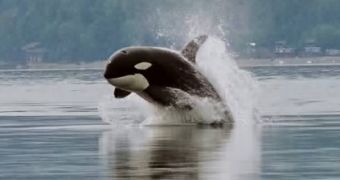Despite spending the vast majority of their time within their own pod, killer whales have recently been discovered to have social inclinations outside their group as well, and to have taken a liking in a spot located in the Avacha Gulf, off the coast of Russia, for casual meeting. Scientists were amazed to discover up to 100 of the creatures, joined together in a “superpod,” lurking in the waters. Until now, they had no explanation as to why the whales engage in this type of behavior, the BBC News reports.
A new scientific study, published in the respected Journal of Ethology, comes with a possible explanation – the whales gather at the meeting place in order to form, grow, and maintain social ties with each other. Regularly, killer whales, scientifically known as Orcinus orca, live in small groups of ten individuals, although sightings of pods as large as 20 members have been reported. At least ten such groups need to come together in order for the massive assembly in Russia to take place.
This type of social hang-outs for the whales does not exist solely in Russia, investigators say. Similar gatherings have been discovered in British Columbia, Alaska, Iceland and Antarctica, and can theoretically occur in any place where large concentrations of orca pods appear. Experts from the Moscow State University and the Far East Russia Orca project took an interest in the “clubs” and carefully observed the whales in Russia from a 4-meter boat.
They noticed that the animals moved around in small groups of two to six individuals. “At first we might see just a few spouts on the horizon. Then quickly we move among them, keeping a distance of a hundred meters so as not to bother them. As far as the eye can see, in every direction you see groupings of two to six killer whales surfacing, spouting then dipping below the surface. Each grouping has a focal mother figure surrounded by her offspring, some of whom may be full grown males with up to 2m dorsal fins that tower over the females,” states Whale and Dolphin Conservation Society (WDCS) project co-director Erich Hoyt.
“The superpods are like big social clubs. These clubs could help them stay acquainted, could be part of the courting process but could have other functions that we need to learn about. Understanding more about their social lives, including their reproduction, will be crucial to our future understanding of them and our ability to keep their population healthy,” Hoyt concludes.

 14 DAY TRIAL //
14 DAY TRIAL //